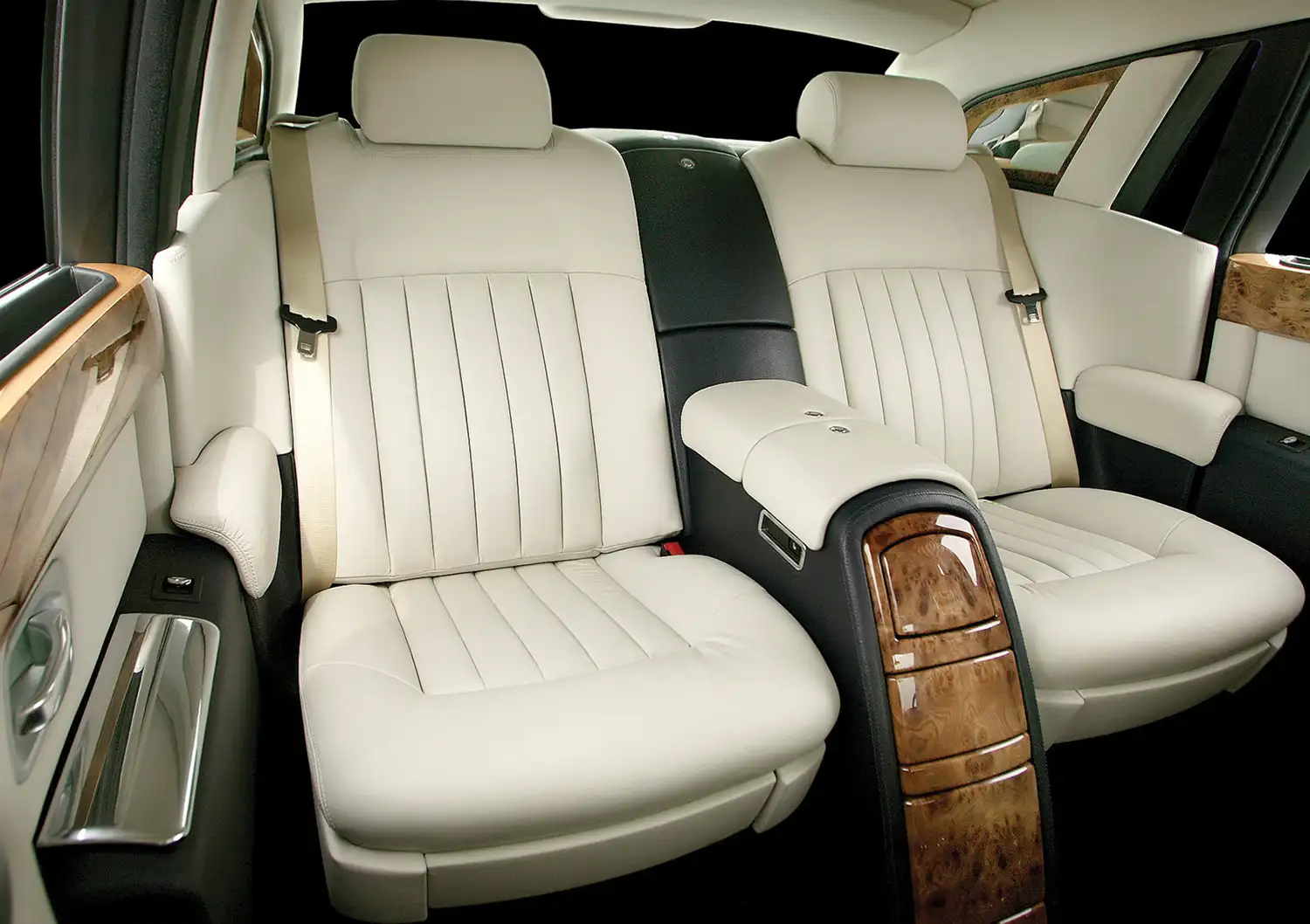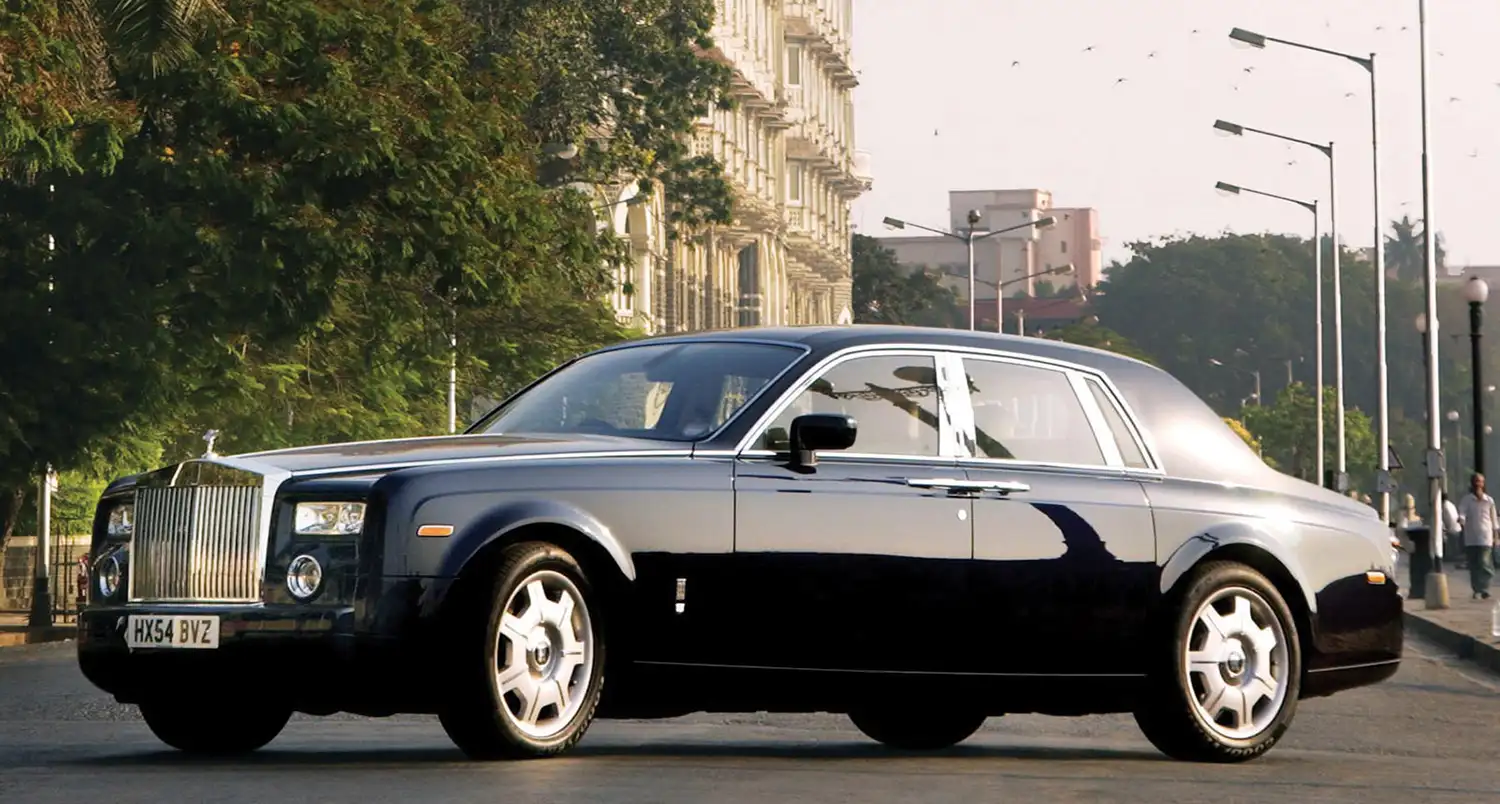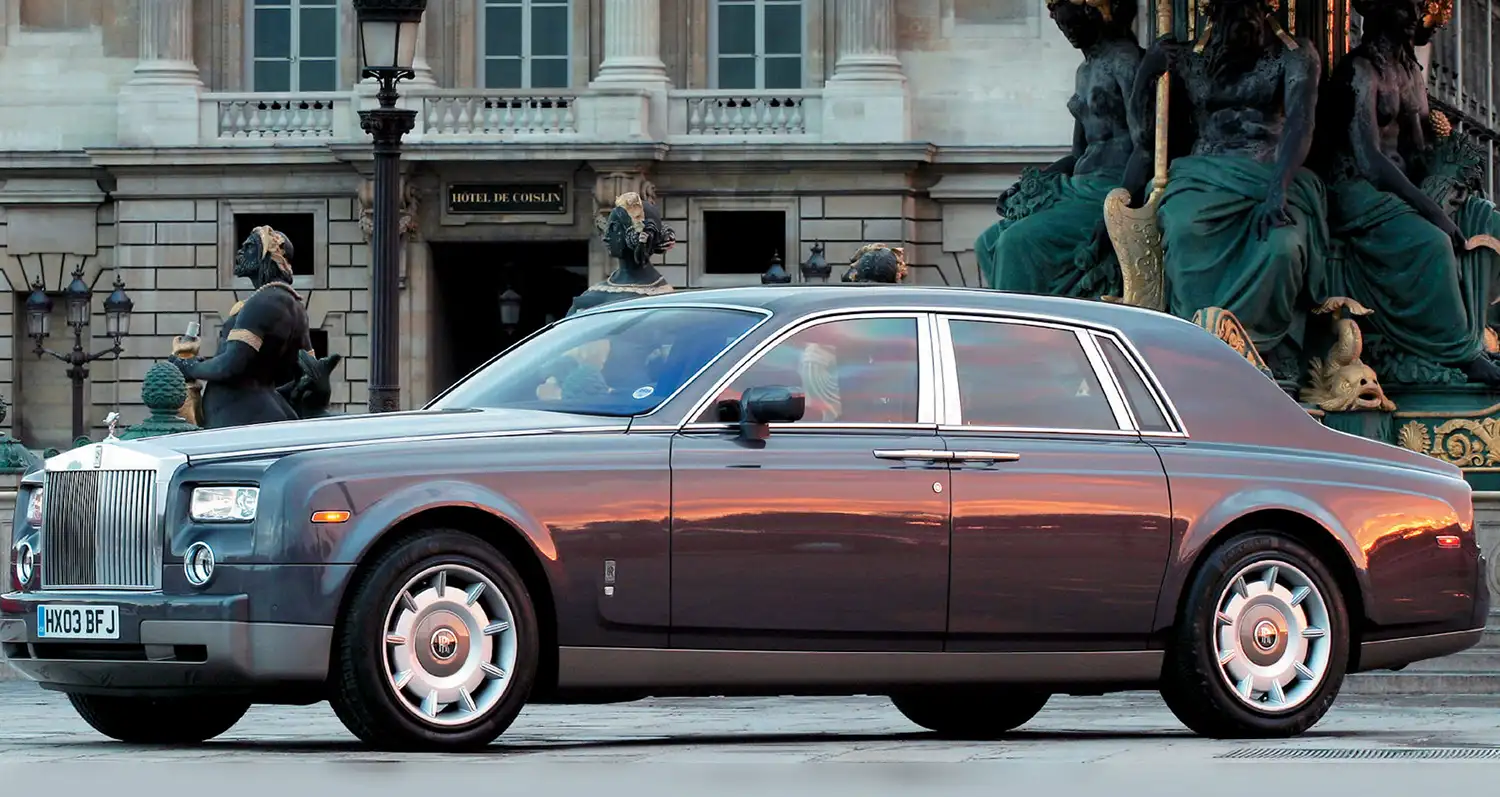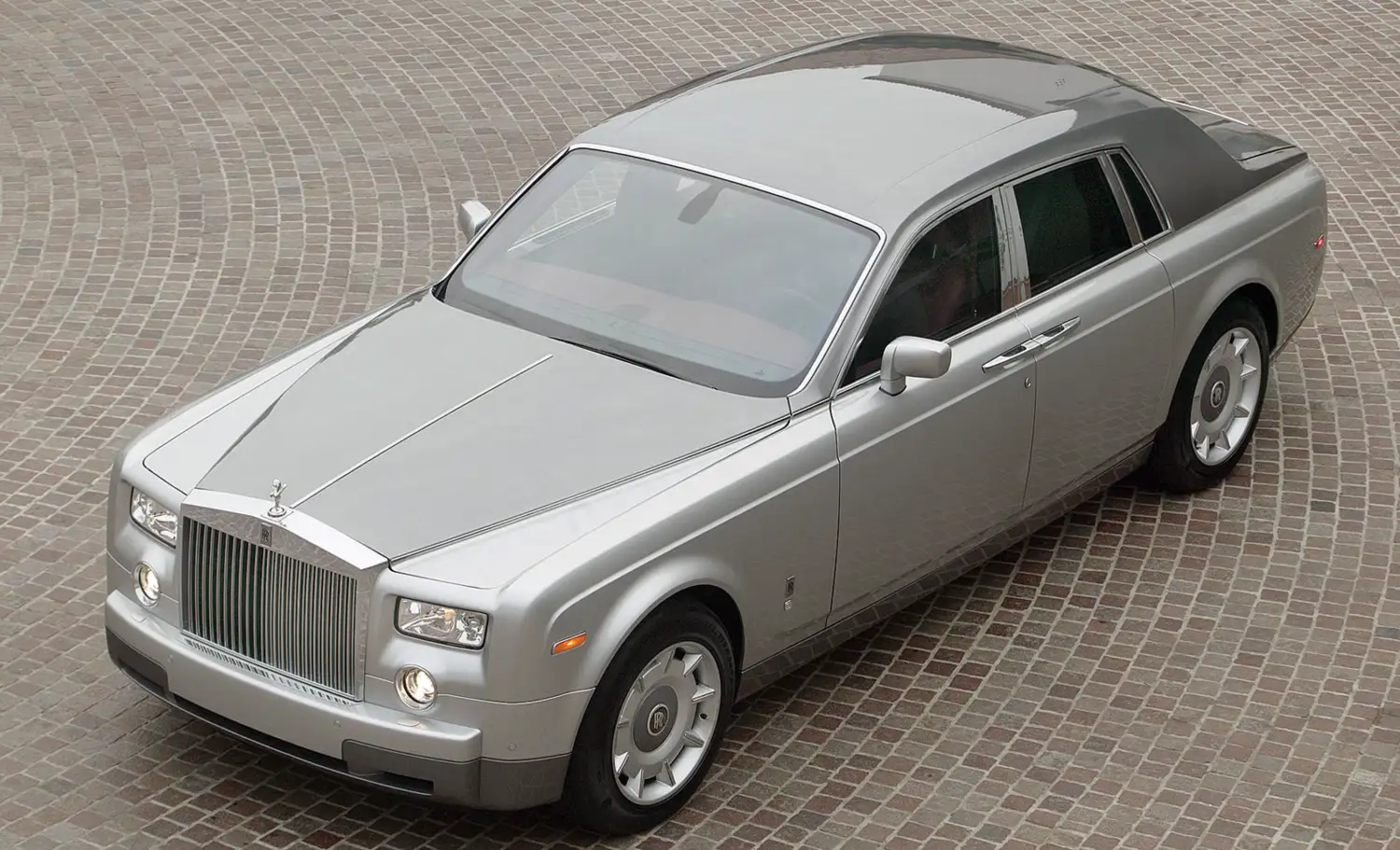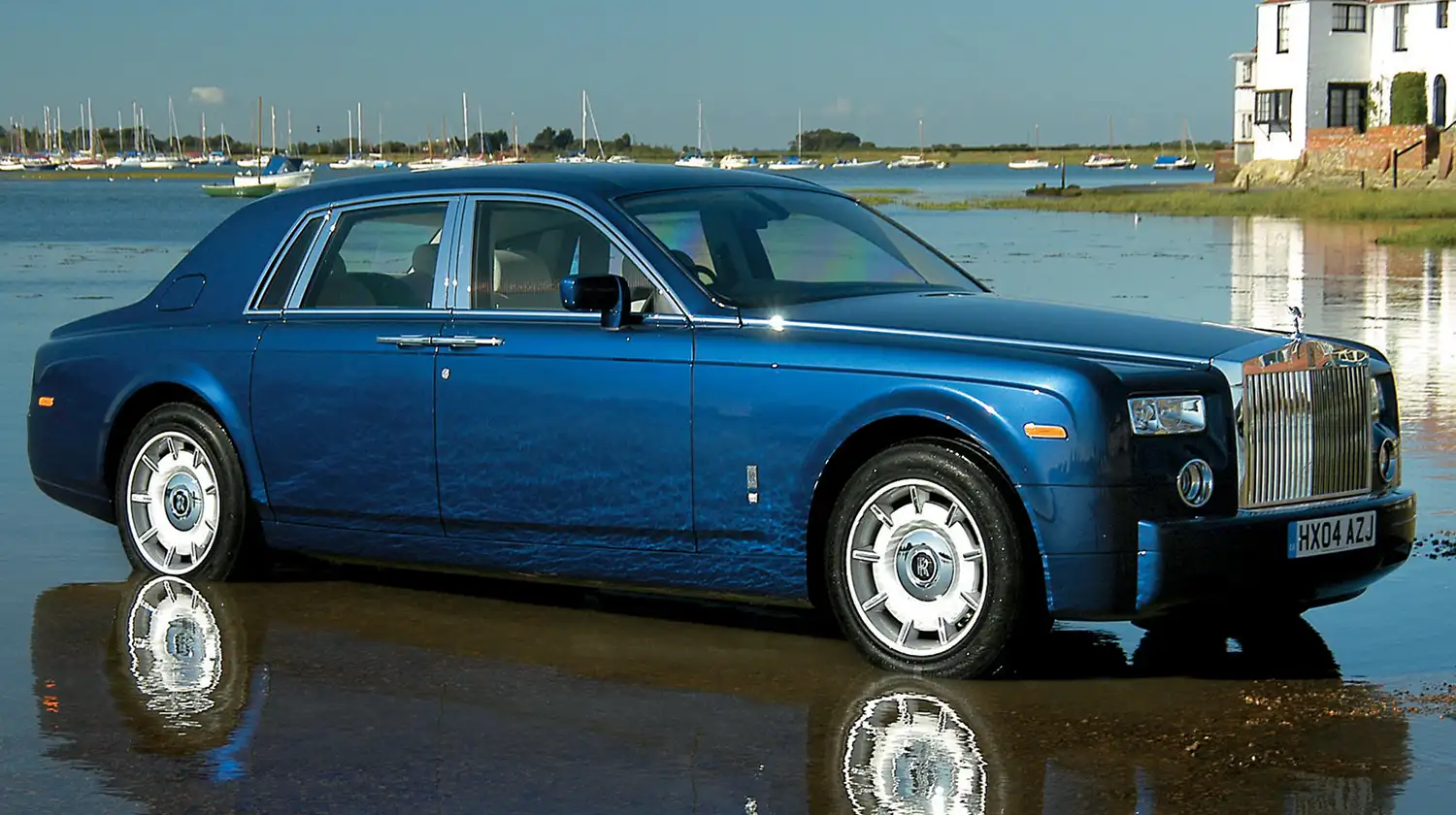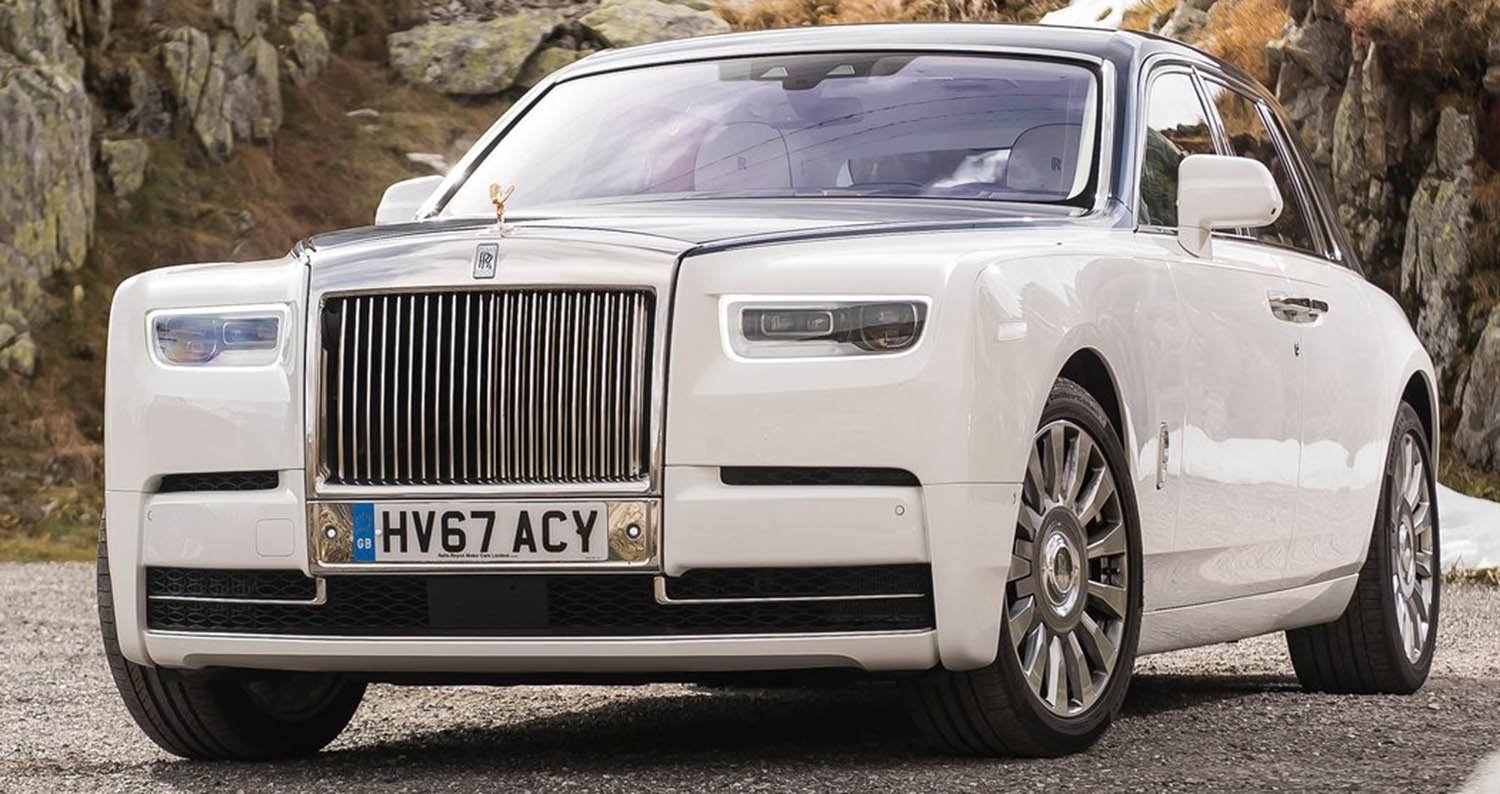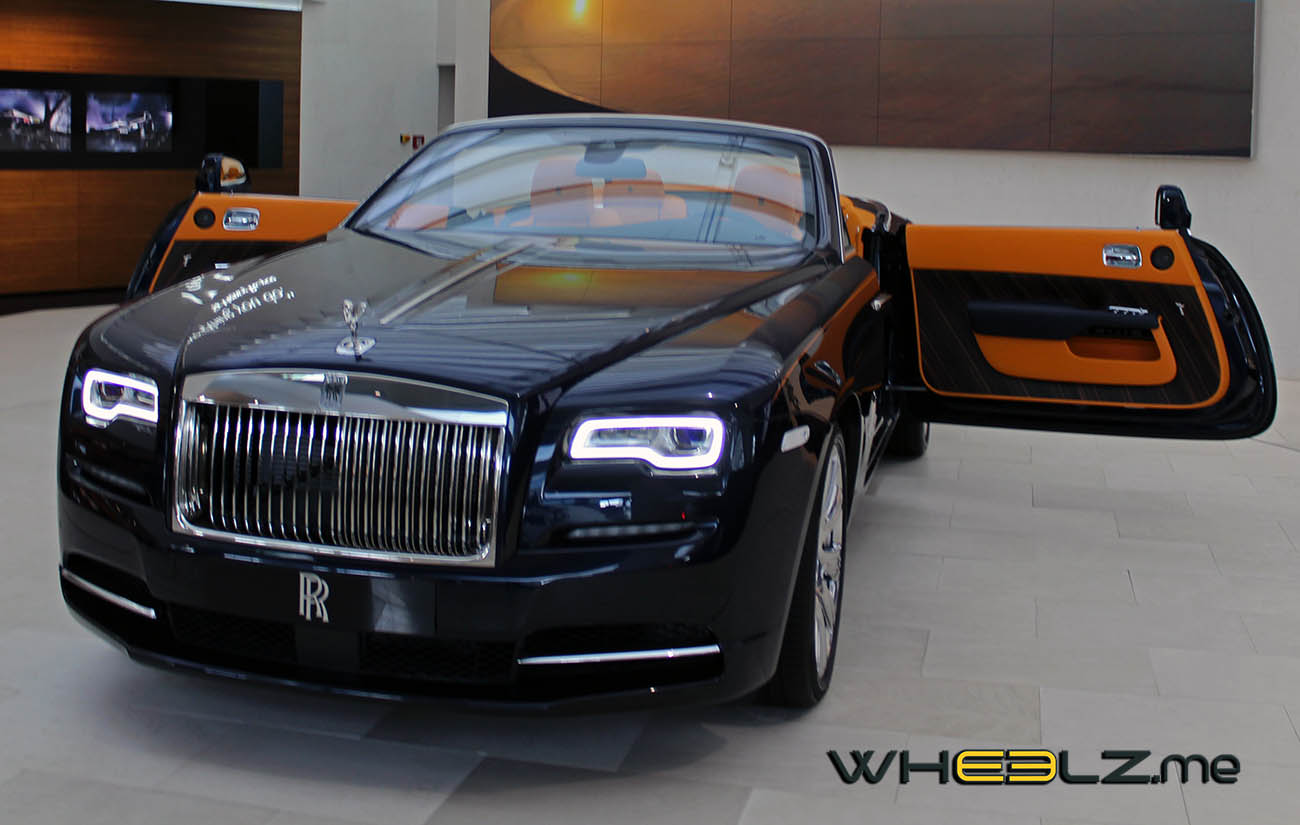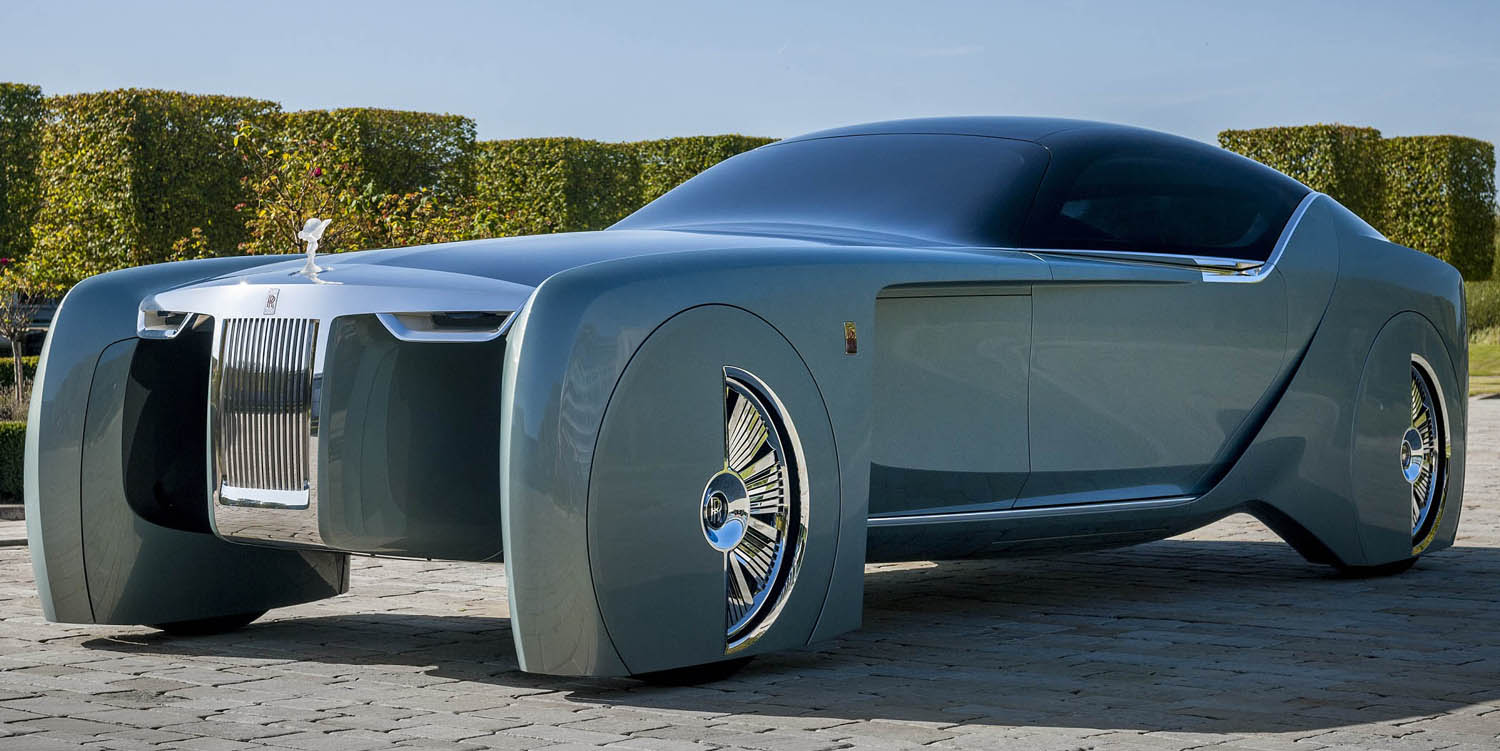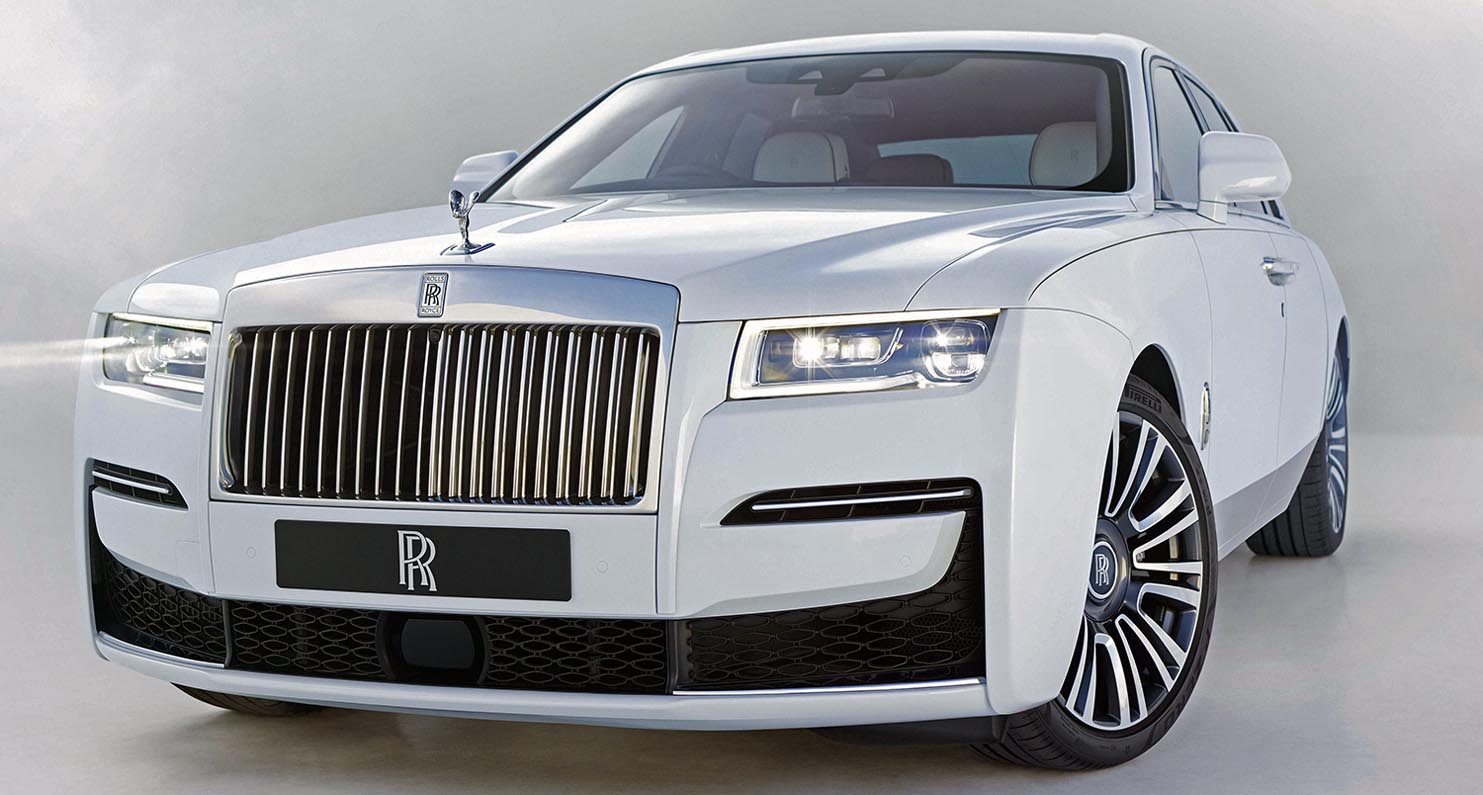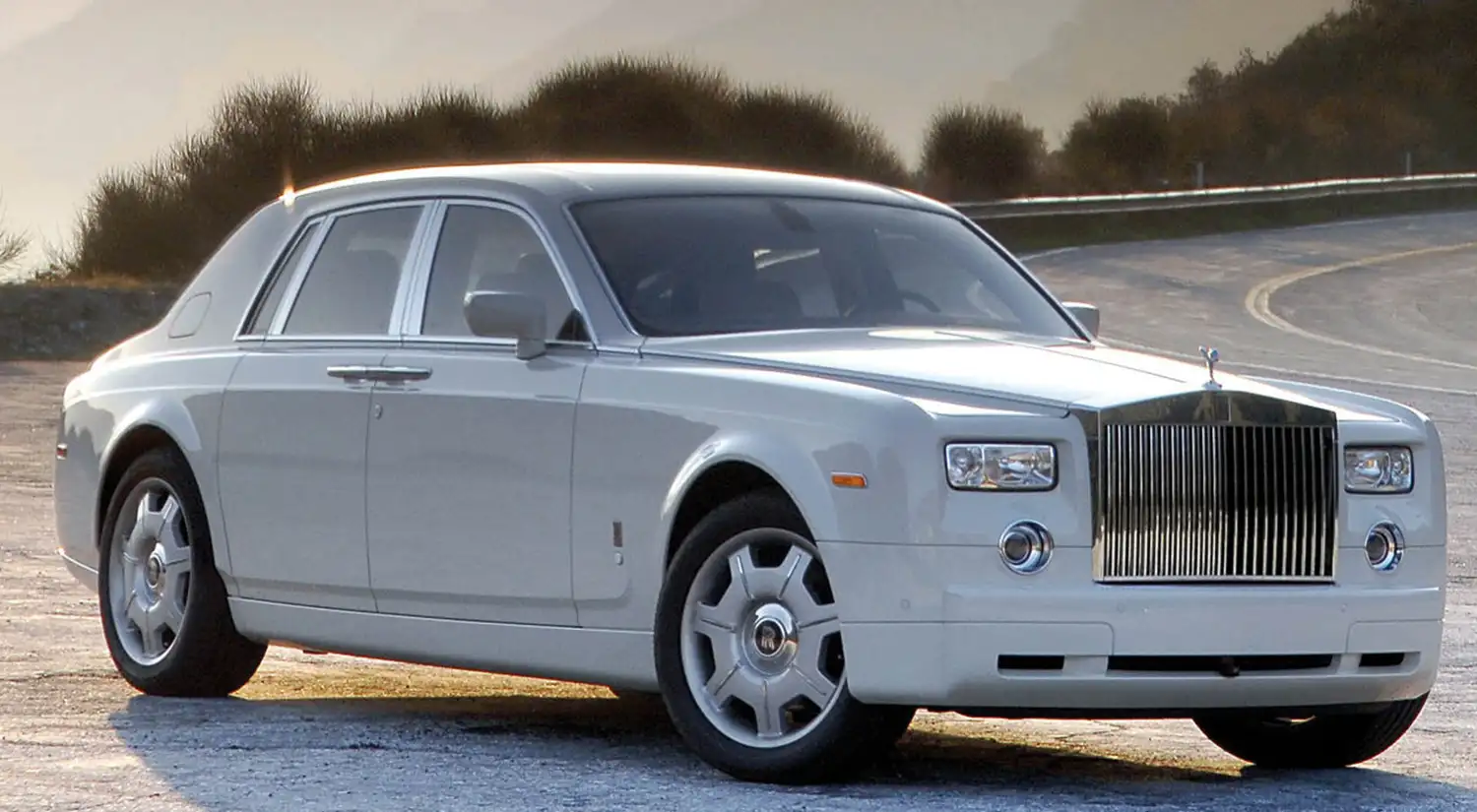
When Rolls-Royce Motor Cars unveiled the Rolls-Royce Phantom in 2003, it heralded a new age for the marque, proudly reclaiming its position at the forefront of automotive design and engineering.
Working to the maxim of company founder Sir Henry Royce – “Strive for perfection in everything you do” – the design and engineering teams spent four years developing this breakthrough model. Using the most advanced technology, whilst drawing inspiration from the company’s rich heritage, their goal was clearcut: to develop a 21st century Rolls-Royce that would be truly worthy of the famous Spirit of Ecstasy.
The result was the Rolls-Royce Phantom. Built at a new, state-of-the-art manufacturing plant in Goodwood, this flagship Rolls-Royce ensured the company’s renaissance by combining the spirit of its illustrious forebears with ground-breaking technology and visionary engineering techniques.

Design
Creating a strong identity for the Rolls-Royce Phantom was essential, says chief designer Ian Cameron: “Our priority was to create a car that was obviously a Rolls-Royce from any angle, even if the Spirit of Ecstasy or the famous grille could not be seen.”
To identify this core essence, the design team immersed themselves in the brand and its history. This revealed classic styling cues such as a long bonnet, wide C-pillars and discrete windows, all of which were incorporated into the Rolls-Royce Phantom’s design. Its powerful, upright stance and dynamic, rising profile are also unmistakably Rolls-Royce. Yet advanced features such as a unique aluminium spaceframe and pioneering direct petrol-injection engine leave no doubt that this is a car at the cutting edge of technology.
Exactly the same can be said of the unique rear coach doors, which stand as testament to the sophisticated engineering to be found throughout the Rolls-Royce Phantom. Hinged at the back, they allow rear passengers to enter and exit the car gracefully, and can be closed at the press of a button.
The interior of the Rolls-Royce Phantom is clean and contemporary, the simplicity of the design belying the technology beneath. Any controls not needed for everyday driving are kept out of sight until required. The multi-media screen, for example, is hidden behind a revolving panel in the centre of the dashboard that normally displays a round, analogue clock. This apparent simplicity extends to the operation of the controls as well: even the highly sophisticated audio system can be operated using just one button.

A hallmark of Rolls-Royce, and of the Phantom in particular, is the way in which the most advanced technology combines with traditional hand-craftsmanship to produce something extraordinary. The switches for the power windows and audio system are beautifully crafted ‘violin keys’, while the chrome air vents are operated by traditional ‘organ stops’. Together with the use of the finest leather and wood veneers, it is this fusion of high technology and hand-craftsmanship that gives the interior its unique and luxurious feel.
Engineering
At the core of the Rolls-Royce Phantom is a sophisticated, lightweight, aluminium spaceframe – a unique and advanced platform conceived specifically by Rolls-Royce’s engineering team to provide a refined and accomplished driving experience.
Constructed from more than 200 box sections of cast aluminium extrusion, the Rolls-Royce Phantom’s spaceframe has the rigidity of a Formula 1 racing car. Manufactured entirely by hand, using around 120 metres of weld, the spaceframe is finished as if it were a precision instrument: each one is checked by laser to ensure accuracy to within a fraction of a millimetre. The completed frame is then placed in a computer-guided machining platform – the largest in the automotive industry – where the critical points are milled with unparalleled precision.
Without the need to provide structural support, the Rolls-Royce Phantom’s body panels are simply fastened to the spaceframe. Made from lightweight aluminium and composite materials, they add minimal weight to the car. Only the boot is formed of steel, engineered to aid the 50/50 weight distribution so desirable for perfect handling.

The Rolls-Royce Phantom’s lightweight and rigid spaceframe provides the foundation for its extraordinary dynamic ability. It has excellent handling – enthusiastic drivers will appreciate the precision with which it can be placed on the road – but not at the expense of the ride, which is as serene and comfortable as one would expect of a Rolls-Royce. The spaceframe also helps to eliminate noise, vibration and harshness, contributing immensely to the calm and tranquillity of the Rolls-Royce Phantom’s interior.
The exceptional integrity of the aluminium spaceframe also provides significant safety benefits, offering excellent occupant protection. Yet it is not the only area in which safety is built into the Rolls-Royce Phantom’s design. The position of the rear seats behind the C-pillar, for example, is inherently safer than the conventional position next to the doors and negates the need for rear side-impact airbags. In a collision, furthermore, the impact is progressively absorbed by crumple zones designed to dissipate the force through the chassis and understructure. Naturally, the Rolls-Royce Phantom has been engineered to pass all current safety legislation.
In addition, the Rolls-Royce Phantom incorporates a raft of safety systems utilising the very latest in technology and controlled by the Intelligent Safety and Information System (ISIS). ISIS takes readings from sensors located throughout the car and, in the event of an impact, makes up to 4000 calculations a second to establish its severity before deploying airbags and, or seatbelt pre-tensioners as necessary. ISIS works in conjunction with the other safety systems fitted to the Rolls-Royce Phantom, including Dynamic Stability Control and Dynamic Traction Control.
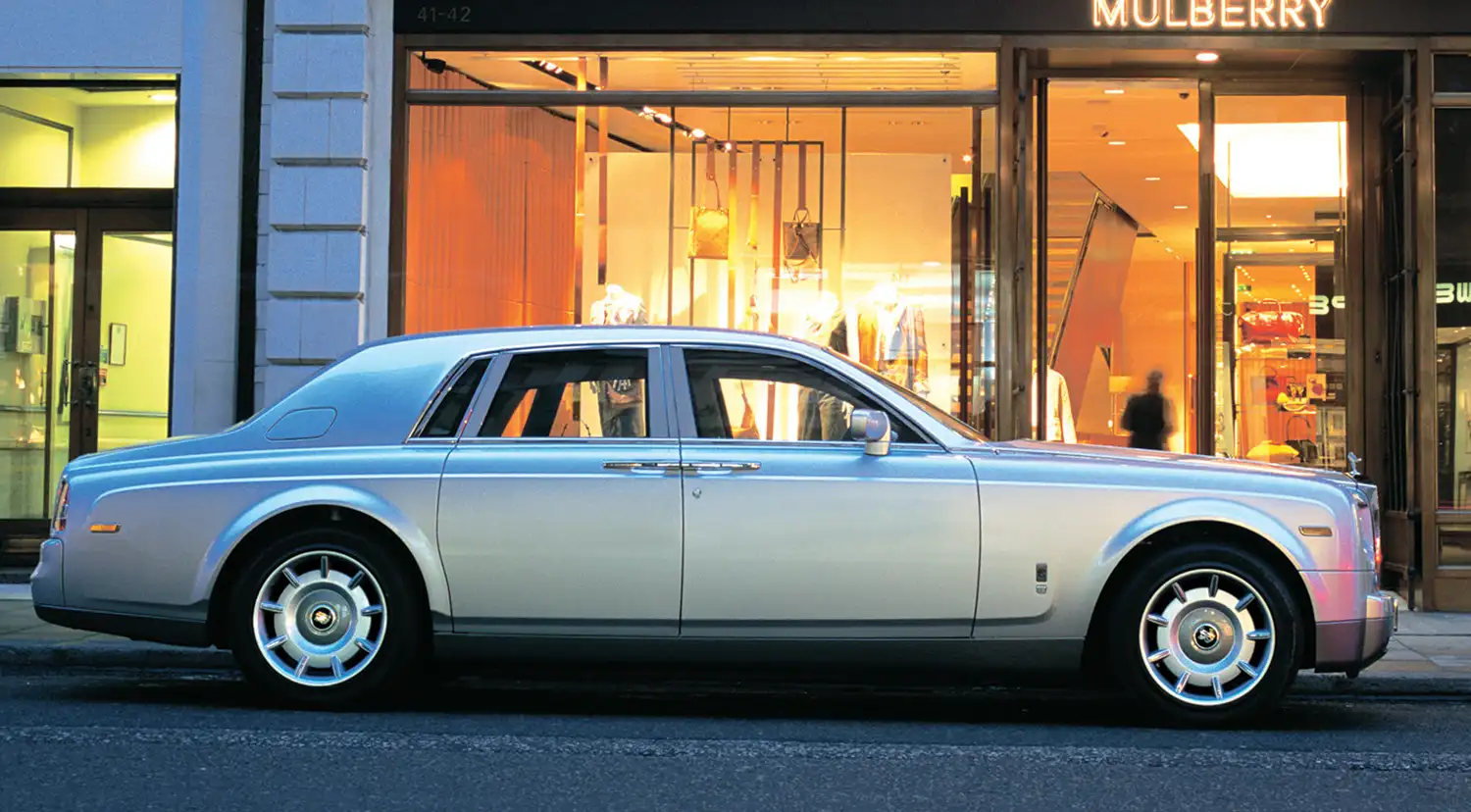
Driving
At the heart of the Rolls-Royce Phantom lies its naturally aspirated 6.75-litre V12 engine. Designed specifically for the Rolls-Royce Phantom, and hand-assembled by Rolls-Royce technicians, this sophisticated engine develops a massive 720 lb ft of torque, 413 lb ft of which is available at 1000 rpm. On the road that translates into instant, muscular power, carrying the Rolls-Royce Phantom from 0-60 mph in 5.7 seconds. Maximising the extraordinary traction of the Rolls-Royce Phantom V12, a six-speed, electronically controlled, automatic transmission helps to deliver the seamless, effortless progress for which Rolls-Royce is famed.
The Rolls-Royce Phantom offers an unparalleled passenger experience, and yet many owners have suggested that the best place to sit is behind the wheel. The view from the elevated driver’s seat down the long sweep of bonnet to the Spirit of Ecstasy is the most inspirational in motoring, while the beautifully crafted, thin-rimmed steering wheel is a pleasure to hold and provides instant feedback from the wheels. Despite its dimensions, the Rolls-Royce Phantom has excellent dynamics and is easy to place accurately through corners. Exhilarating yet supremely relaxing, it delivers a driving experience of purity and precision.
Exterior finish
Strikingly modern and immaculately proportioned, the Rolls-Royce Phantom is a car of extraordinary elegance. Matching the beauty of its exterior design is the mirror-like lustre of the paintwork, testament to the great skill of Goodwood’s paint technicians. Five layers of paint and clear lacquer are applied to each Rolls-Royce Phantom – seven if it’s a two-tone car – and between each application, our technicians sand the body by hand. After the final layer has been applied, the body is hand-polished for five hours to give a finish of unrivalled depth and sheen.

There are 15 standard exterior colours from which customers can choose, although up to 45,000 different hues are available through the Bespoke programme. In keeping with Rolls-Royce tradition, single or double coachlines can be specified. Almost six metres long, and precisely level, these are painstakingly painted by hand in a process that takes three hours for each line. Our Bespoke artists can also design and apply individual motifs to a customer’s Rolls-Royce Phantom.
Interior
The timeless architecture of the Rolls-Royce Phantom’s interior combines with the finest natural materials to provide a luxurious social space in which passengers can relax. Cashmere and soft leathers give an air of sumptuous indulgence, while the very latest in audiovisual technology ensures that every journey is as pleasurable as possible.
The rear seats are elevated by 18 mm, giving rear passengers a peerless view out of the car, while head room is generous at 979 mm. Lounge seating with slightly curved outer edges allows passengers to turn towards one another comfortably; if preferred, however, the option of individual seats may be specified, adding a centre console which can be used to house a drinks cabinet, additional audiovisual equipment or other Bespoke items.

The Lexicon audio system delivers a quality of sound unrivalled in the automotive world. Engineered to recording industry standard, this system uses studio-grade Lexicon components and is unique to the Rolls-Royce Phantom, using 15 speakers and a nine-channel amplifier to deliver 420 watts of sound. Two subwoofers are housed within 16-litre resonance chambers in the space created by the Rolls-Royce Phantom’s double floor, while a combination of 100 mm mid-range and 25 mm tweeter arrays are located in the front and rear doors, on the parcel shelf and above the instrument panel. The result is an acoustic ‘sweet spot’ that encompasses the whole interior, giving the perfect, surround-sound listening experience from anywhere in the car.
For further entertainment, theatre configuration adds two 12-inch monitors within the veneered picnic tables in the rear. These screens are linked to a six-DVD changer and also allow viewing of digital television, depending on market restrictions. In combination with the Lexicon audio system, this option can make any journey in the Rolls-Royce Phantom a truly cinematic experience.
Craftsmanship
Only the very finest materials are used in the Rolls-Royce Phantom. Both the leather hides and the exquisite wood veneers are hand-selected by specialists from our leather and wood workshops – to ensure not only that they are of the highest quality, but also that they have aesthetic characteristics appropriate to the interior of the Rolls-Royce Phantom. They are then painstakingly prepared so that their inherent natural beauty and quality is displayed to best effect.
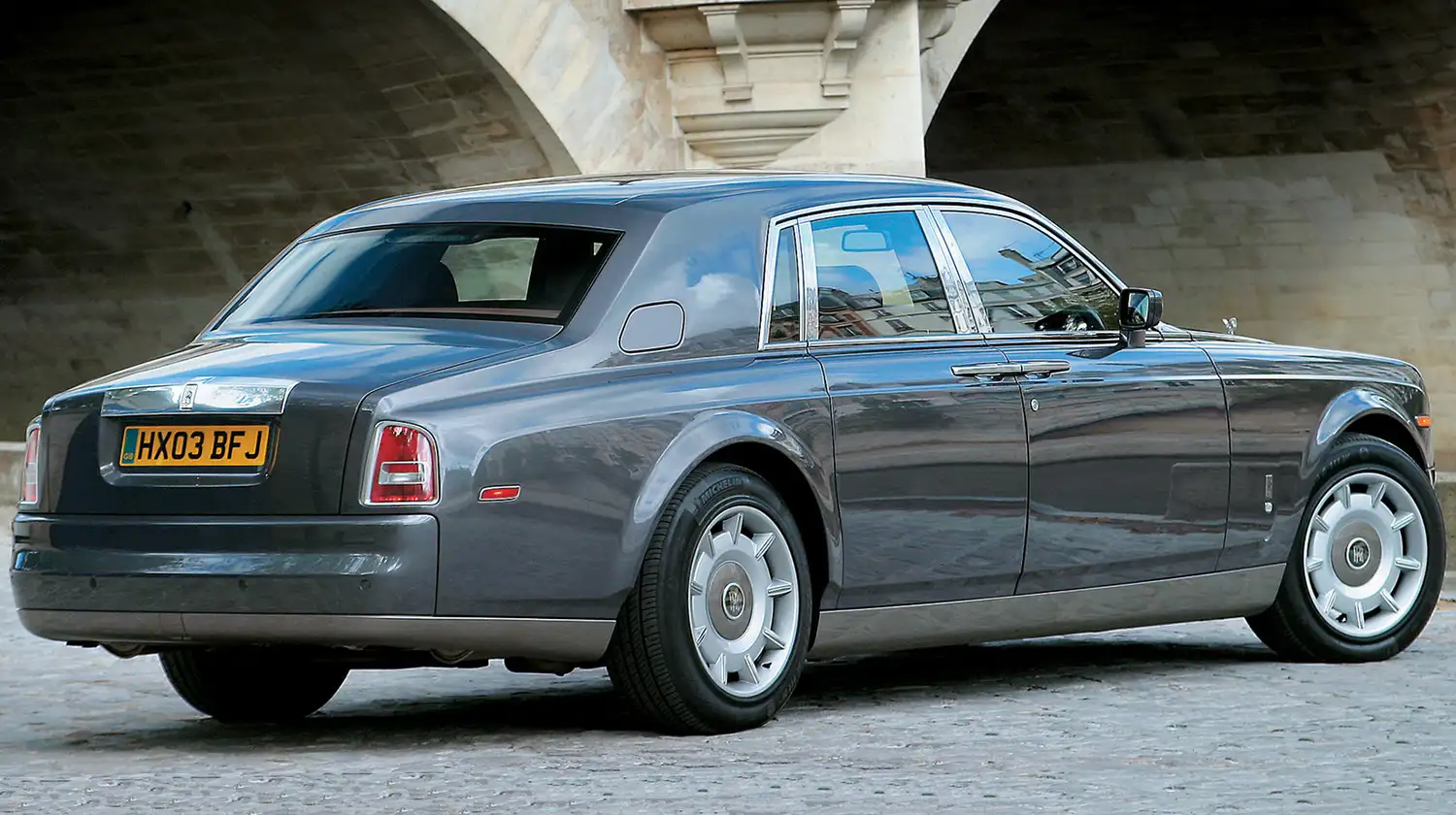
It takes between 15 and 18 hides to upholster one Phantom – more for the Rolls-Royce Phantom Extended Wheelbase. Each one comes from specially selected herds of cattle, and only the most supple mature bull hides are used. Each hide is checked meticulously by hand to identify any imperfections. The 450 individual leather parts are then cut out using a precision laser before being carefully stitched by hand.
Three different types of leather are used: natural grain for the seats and trims, pre-shrunk in sun-lit areas and tipped (embossed) on the centre console and door trims to provide an attractive variation. The barrel-dyeing process used to colour the leather gives a rich, uniform pigmentation through the entire hide whilst maintaining the natural feel, softness and grain. There are 13 standard colours, but many more are available through the Bespoke programme.
Depending on specification, up to 43 wood parts are used in each Rolls-Royce Phantom. Each of these is constructed from up to 28 layers of wood, interspersed with thin sheets of aluminium to ensure strength and to prevent splintering in the event of an impact.

The wood veneers used are sourced from sustainable forests and chosen for their richness and complexity of grain. There are six standard veneers, including Burr Walnut and Bird’s Eye Maple, but any number are available through the Bespoke programme. Whichever they choose, customers can be assured of an unrivalled quality of finish. Craftsmen, many drawn from the yacht-building and fine cabinet-making industries, carefully book-match every veneer used inside the Rolls-Royce Phantom. This highly skilled technique ensures that the grain on the left-hand side of each panel is an exact mirror image of that on the right. Not only does this symmetry apply to each panel, however, but across the cabin as a whole, giving each Rolls-Royce Phantom an exquisite and unique interior.
Our craftsmen can also employ traditional marquetry techniques to inlay materials of a customer’s choice into the wood veneers. From cross-banding with boxwood to inlays of silver or mother-of-pearl, these techniques can be used to create a distinctive alternative to the single veneer finish.
Bespoke
While the Rolls-Royce Phantom has an extensive options list, the Bespoke programme allows customers to create a car that is completely personal to them by specifying features that are not usually available and 65 per cent of Rolls-Royce customers choose to do this. Examples include a one-off colour for the paint or leather, or the use of an unusual wood to complement the interior.
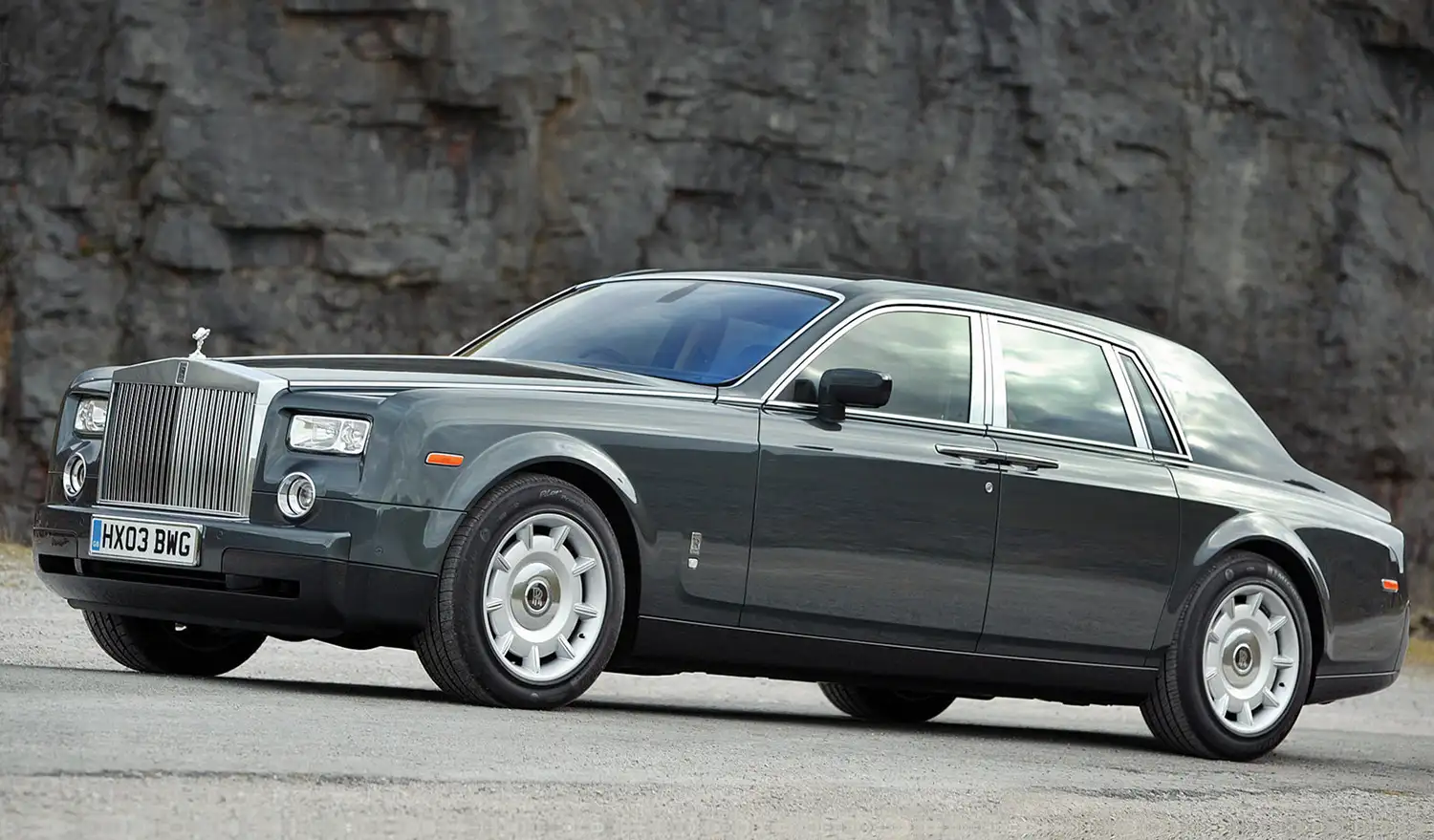
Customers may choose to personalise their Rolls-Royce Phantom by specifying embroidery on the interior leather: our Bespoke interior designers can fulfil any request, from simple initials to embroidered images. Customised tread plates incorporating text or pictures can also be produced, perhaps featuring an owner’s name or celebrating an event or limited edition.
The Rolls-Royce Phantom’s glovebox has been designed for adaptation: Bespoke possibilities include the fitting of a set of fountain pens or a humidor, perhaps complemented by a leather writing surface in the rear picnic tables or a Bespoke ashtray. Through modifications to the Rolls-Royce Phantom’s body, the already spacious boot can be extended still further, giving additional room for an 85-litre suitcase. This allows a total of four large suitcases to be stowed.
Whether the request is a 24-carat gold Spirit of Ecstasy or visible exhaust pipes, anything is possible. The Bespoke programme is limited only by the customer’s imagination.
Rolls-Royce Phantom Extended Wheelbase
In 2005, the Phantom was joined by a longer model, the Rolls-Royce Phantom Extended Wheelbase, which offers additional space for rear passengers while maintaining the beauty of the standard Phantom as well as its first-class driving performance and the comfort of all four occupants.
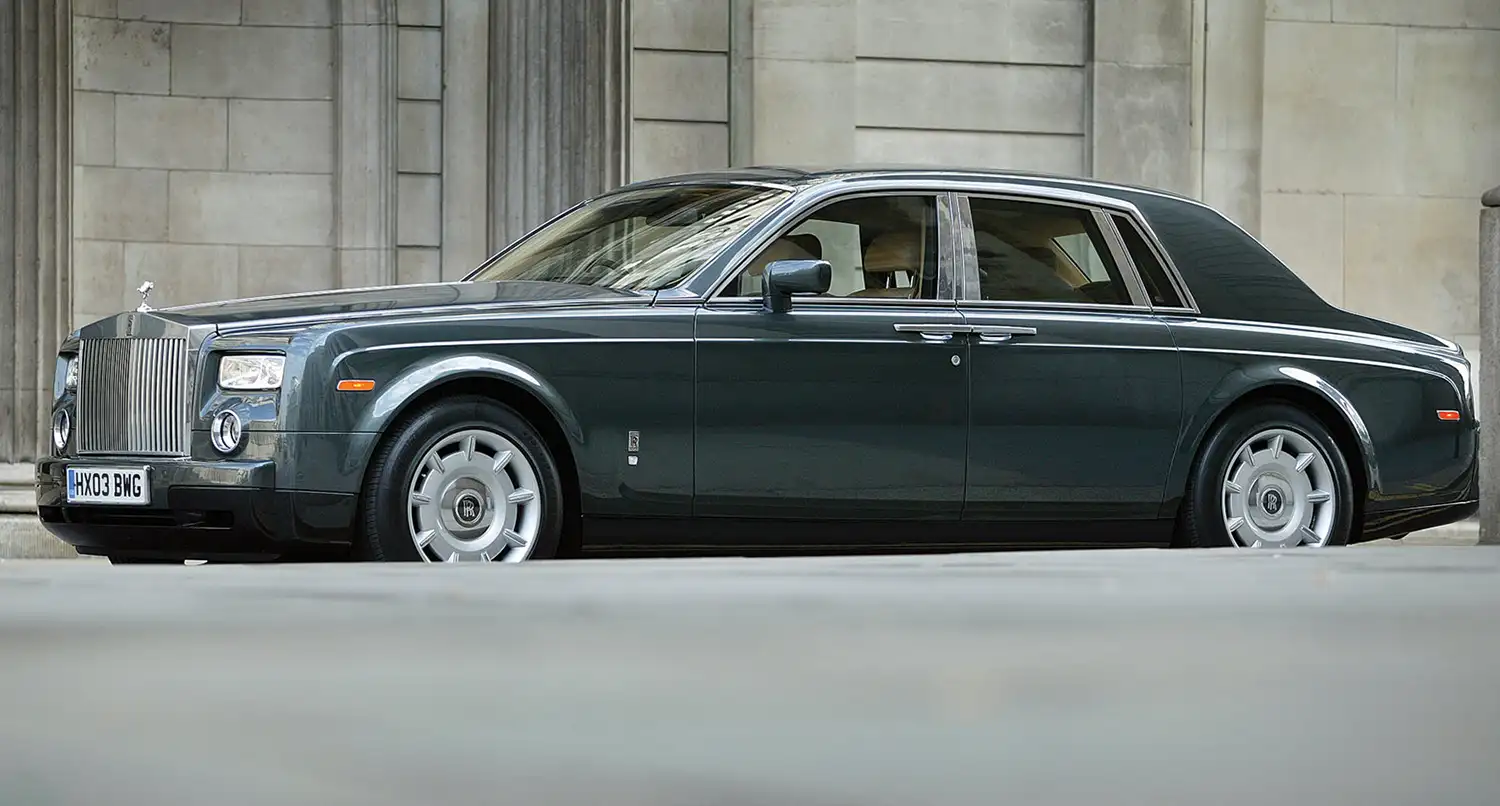
To create the Phantom Extended Wheelbase, an additional 250 mm was added to the rear passenger compartment behind the B-pillars. The extra length is achieved simply by using longer extrusions in the construction of the spaceframe, which was engineered specifically to allow for longer-wheelbase models. As a result, no torsional rigidity is lost, so the Rolls-Royce Phantom Extended Wheelbase retains not only the powerful looks of the standard car, but also its outstanding dynamic performance and driving refinement. The only major new parts required are a new aluminium roof and door panels – and thanks to Goodwood’s flexible production processes, the Phantom Extended Wheelbase can be built alongside the Rolls-Royce Phantom without any difficulty.
The interior of the Rolls-Royce Phantom Extended Wheelbase offers significant additional space and lends itself particularly well to the inclusion of Bespoke features – for example, a partition wall for passenger privacy. Other possibilities include drinks cabinets in the rear doors or additional audiovisual equipment, while many customers choose to add rear compartment curtains or even a safe in the boot. Through the Bespoke programme, any number of options can be explored.
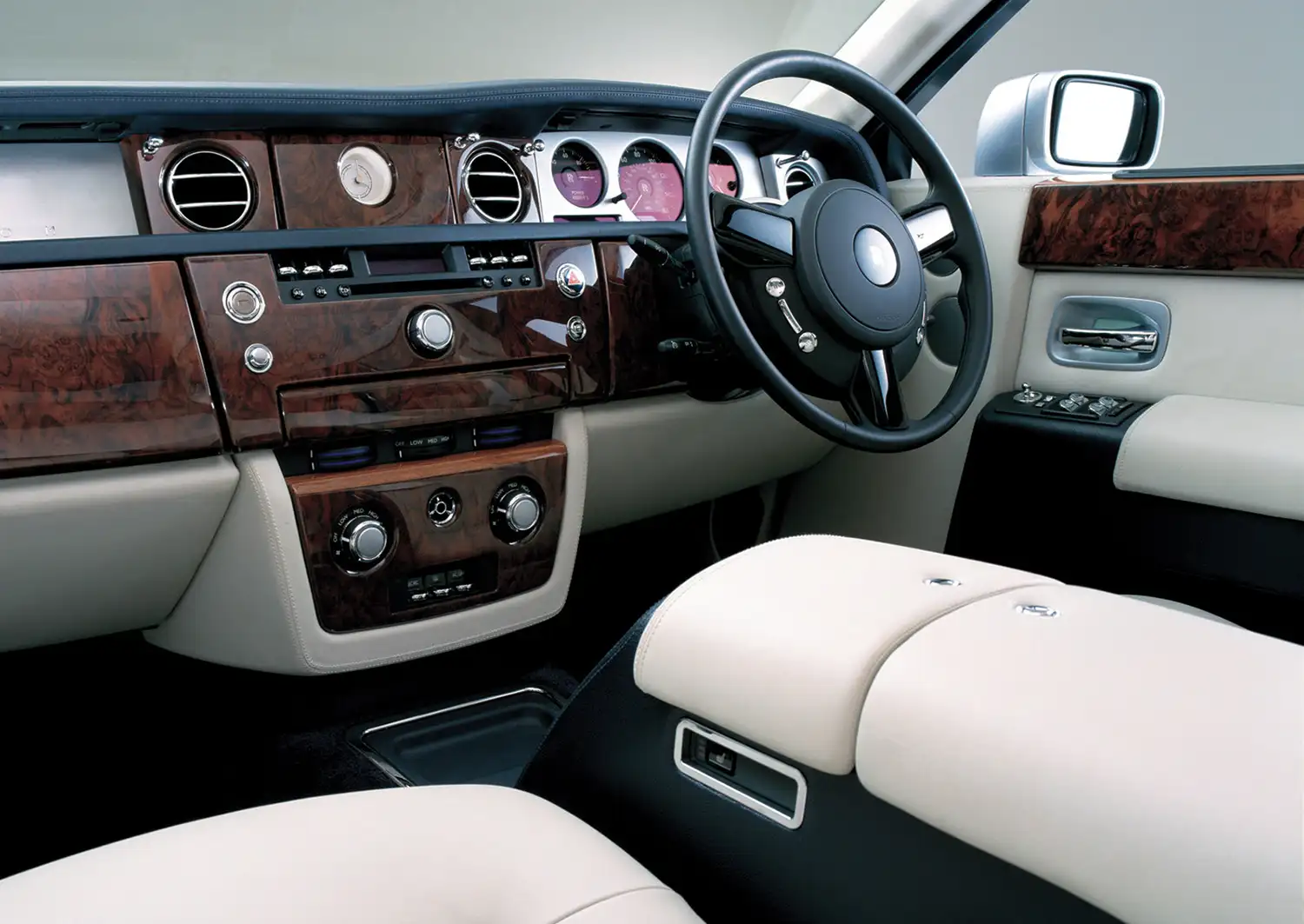
Technical specifications
- No of doors/seats: 4 / 5 (optionally 4)
- Vehicle length: 5834 mm / 229.7 in
- Vehicle width: 1990 mm / 78.3 in
- Vehicle (unladen): 1632 mm / 64.3 in
- Wheelbase: 3570 mm / 140.6 in
- Turning circle: 13.8 m / 45.3 ft
- Track
- front: 1685 mm / 66.3 in
- rear: 1670 mm / 65.7 in
- Width at shoulder
- front: 1509 mm / 59.4 in
- rear: 1431 mm / 56.3 in
- Leg room
- front: 1028 mm / 40.5 in
- rear: 947 mm / 37.3 in
- Head room
- front: 1020 mm / 40.2 in
- rear: 979 mm / 38.5 in
- Boot volume (DIN): 460 ltr / 16.2 cu ft
- Fuel tank capacity: 100 ltr / 22 Imp gal
- Drag Cd: 0.38
- Tyre size: PAX 265/790 R540 A 111W
- Wheel size, front and rear: PAX 265 x 540 A
- Engine: 60° V12
- Valves: 48
- Fuel management: Direct injection
- Displacement: 6749 cc / 411.8 cu in
- Stroke: 84.6 mm / 3.33 in
- Bore: 92.0 mm / 3.62 in
- Power output: 453 bhp / 460 PS / 338 kW @ 5350 rpm
- Max torque: 720 Nm / 531 lb ft @ 3500 rpm
- Compression ratio: 11:1
- Top speed: 149 mph / 240 km/h (governed)
- Acceleration
- 0-60 mph: 5.7 sec
- 0-100 km/h: 5.9 sec
- 0-1000 m: 25.6 sec
- Fuel consumption (EU)
- urban: 23.2 ltr/100 km / 12.2 mpg
- extra-urban: 11.3 ltr/100 km / 25.0 mpg
- combined: 15.7 ltr/100 km / 18.0 mpg
- CO2 emissions: 377 g/km
